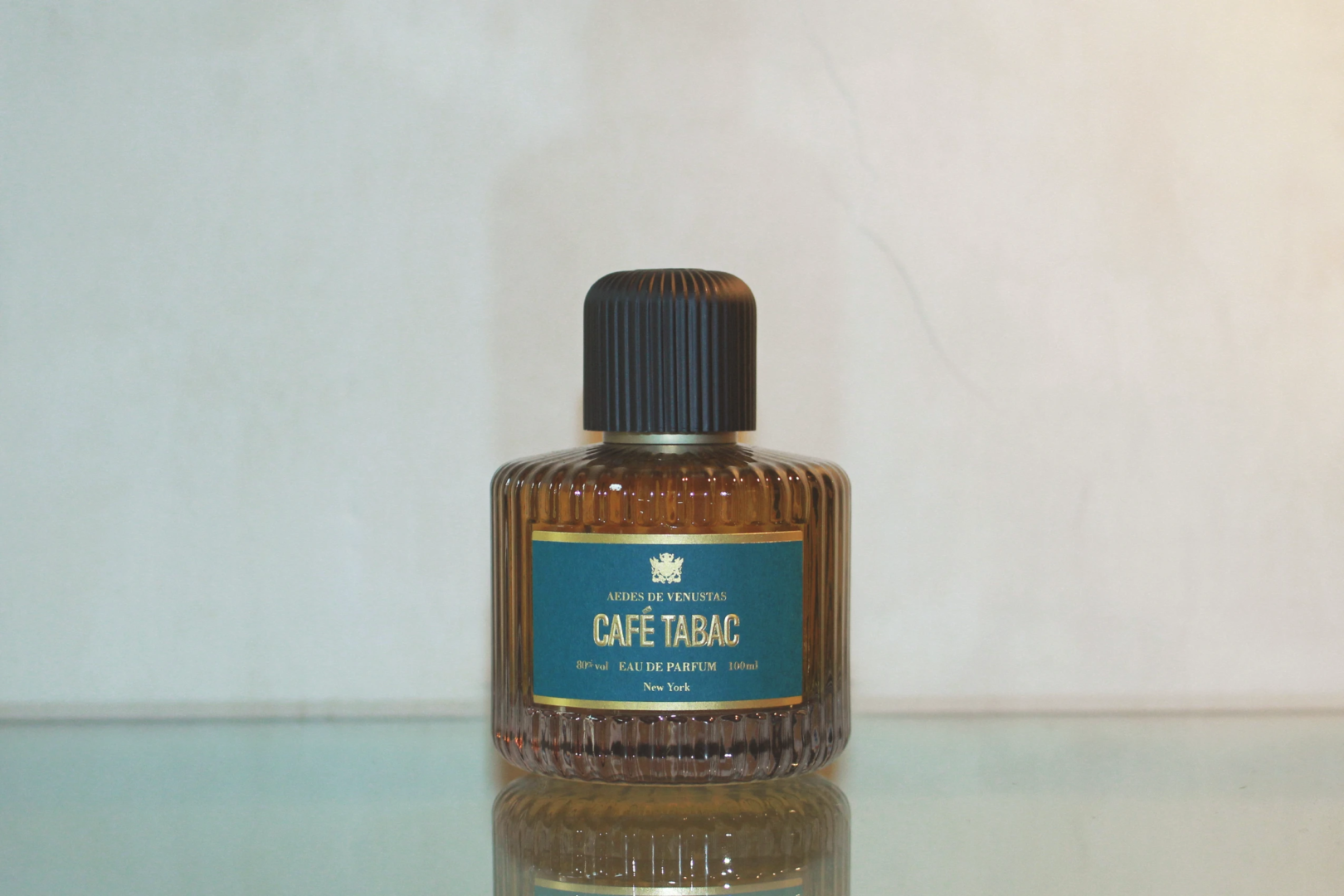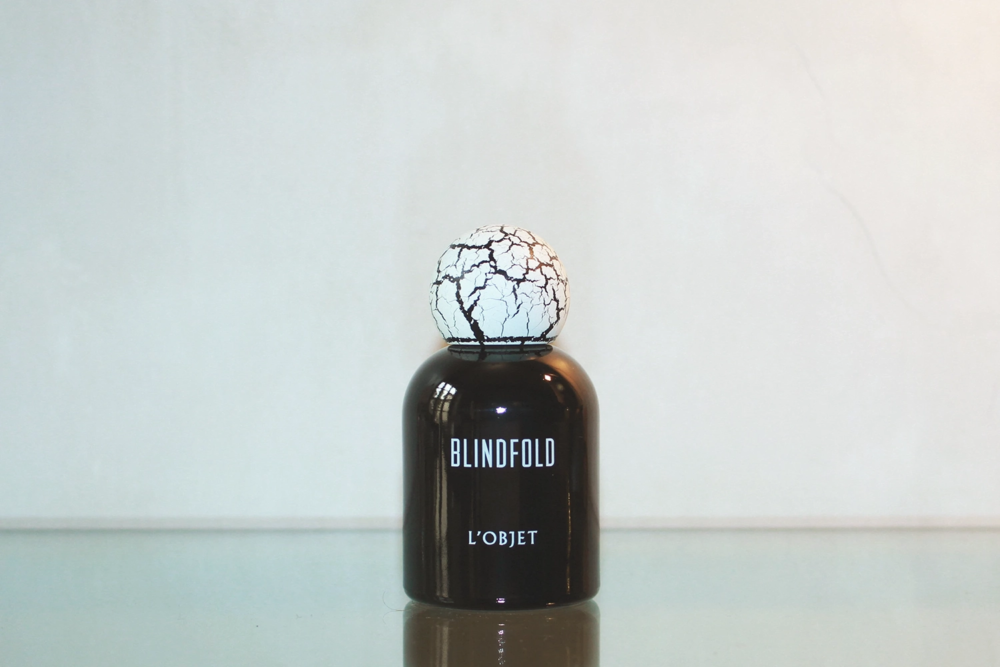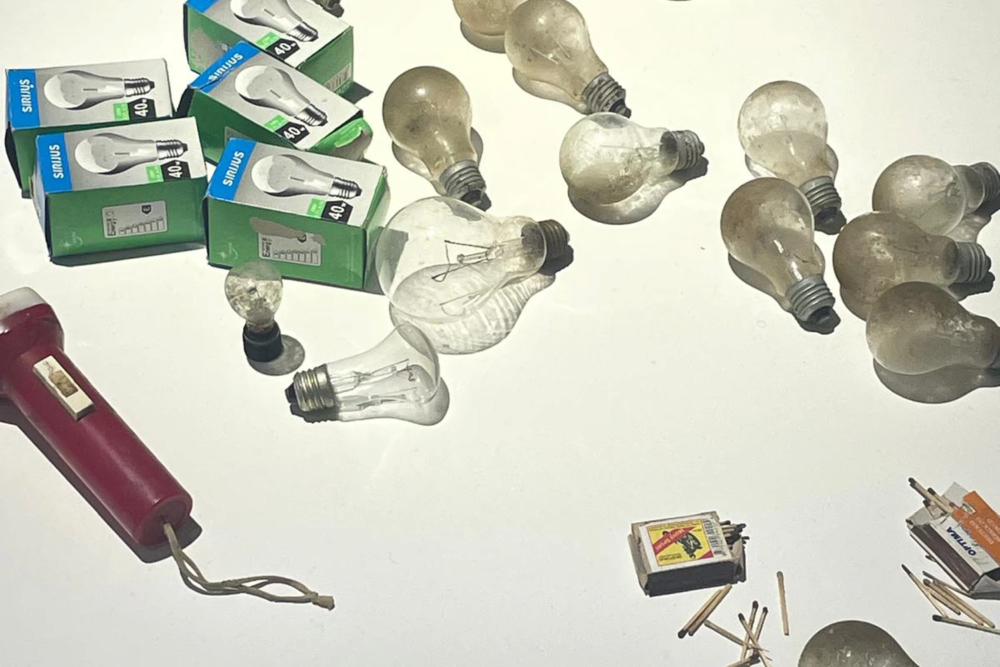
Aedes de Venustas brings 1990s New York back into the present
Rooted in the history of a real 1990s East Village bar, Café Tabac by Aedes de Venustas translates a New York atmosphere into scent, combining tobacco, resin, fruit and smoke in a composition created with perfumer Bertrand Duchaufour
Why 1990s New York is relevant again
The 1990s have returned to the cultural spotlight because the decade represents a final moment before digital habits transformed social life. The internet was expanding, but the world was still analogue. People met in bars, not in feeds. Nights depended on unpredictability, not on curation. The sense of possibility that defined the end of the century felt genuine because it was lived in person.
New York carried this energy with particular intensity. The East Village was a centre of music, queer culture, fashion, downtown art and informal networks that operated without structure. Bars were not concepts. They were rooms where people collided. Café Tabac belonged to this environment and captured the social dynamic of the decade with unusual clarity. Aedes de Venustas returns to it because its founders experienced that period directly, not as a trend but as part of their own history.
How Aedes de Venustas grew from a West Village boutique into a contemporary perfume house
Aedes de Venustas began in 1995 when Robert Gerstner and Karl Bradl opened Aedes Perfumery on Christopher Street in the West Village. At the time, New York lacked a destination dedicated to rare fragrances from around the world. Aedes filled this gap by curating a selection based on authorial identity rather than commercial scale. The boutique quickly became known for treating fragrance as culture, not accessory.
In 2012, Gerstner and Bradl launched their own line under the name Aedes de Venustas. The Latin expression means “Temple of Beauty” and reflects their view of perfumery as a craft rooted in authorship and material quality. The name signals their commitment to working directly with perfumers and building fragrances with narrative intent.
Their collaborations include some of the most respected noses in contemporary perfumery – Bertrand Duchaufour, Alberto Morillas, Fabrice Pellegrin, Ralf Schweiger and Nathalie Feisthauer. The founders bypass traditional fragrance-house briefs, preferring direct dialogue with the perfumers. The relaunch in 2021 introduced fluted glass bottles with peacock-blue accents, produced in New York using French-sourced oils, creating a new visual identity aligned with the brand’s ethos.

Café Tabac as a real East Village place, not a metaphor
The Café Tabac of the 1990s was a small bar in the East Village that became a natural meeting point long before the idea of a “scene” became a marketing tool. It was known for its mix of fashion figures, nightlife regulars, queer communities, artists and actors. Kate Moss and Johnny Depp met there. Madonna appeared upstairs. Leonardo DiCaprio passed through during late hours. The bar was part of a network of places where people moved without the need to perform.
Its cultural relevance extended beyond celebrity sightings. “Sundays at Café Tabac” became a gathering for lesbian and queer nightlife, contributing to the visibility of communities that were shaping downtown New York. Smoke filled the rooms. The air carried perfume, street clothing, kitchen heat and the residue of late-night conversation. It was a place that reflected the rhythm of the decade.
For Gerstner and Bradl, Café Tabac was not a reference discovered later. It was a place they actually lived. The fragrance is connected to that experience.
How the fragrance was conceived by Bertrand Duchaufour
The idea for the fragrance emerged years after the bar closed. During a work trip to the Dominican Republic, Gerstner and perfumer Bertrand Duchaufour moved from tropical forest to coast and eventually into a cigar factory. The space held warm air, drying tobacco leaves, smoke from burning edges, fruit notes in the atmosphere and the physicality of manual production. Gerstner asked Duchaufour whether it was possible to translate this environment into a fragrance. That question defined the project.
Duchaufour created Café Tabac with a 20% concentration and a one-month maceration in France. His approach focused on atmosphere rather than a singular note. The goal was to construct a spatial impression: the density of a bar, the mix of smoke and fruit, the smell of materials, the blend of movement and residue.

The structure of Café Tabac as an olfactory space
Café Tabac opens with bergamot, apple and tamarind. The transition is quick, like stepping from street air into a crowded interior. It sets the stage for the shift into the heart.
The heart centres on tobacco as an environment. Dry leaves, moist floral facets and the sharp edge of a lit cigar form the backbone. Around them, salvia sclarea, davana, mango, dried fig and date create a textured density. Catrame, cade and cedar introduce burnt wood and resin, adding depth rather than polish.
The base holds the composition together with ambergris, cistus-labdanum, oakmoss and Peru balsam. Vanilla, cacao and burnt sugar provide physical weight, while cardamom and clove trace the end of the night, when the room becomes quieter and the remains of the atmosphere stay on skin and clothing.
Bertrand Duchaufour’s role in shaping the identity of the scent
Bertrand Duchaufour trained in Grasse in 1985 under senior perfumers at Florasynth and later at Symrise. Over the decades, he became known for compositions structured around environments and materials. His work for Comme des Garçons, Penhaligon’s, Eau d’Italie and Acqua di Parma established his reputation as a perfumer who understands the relationship between place and scent.
He is one of the few classically trained noses to work independently. At Accords et Parfums in Grasse, his formulas are mixed by hand, maintaining a direct connection to raw materials. Café Tabac fits naturally into his portfolio: a scent built not around abstraction but around atmosphere.
The founders and their impact on modern niche perfumery
Robert Gerstner and Karl Bradl shaped Aedes not only as a retail destination but as a cultural anchor for niche perfumery in New York. Gerstner brings a precise understanding of materials and European perfumery traditions. Bradl contributes a strategic sense of identity and an ability to recognise what resonates with fragrance-driven consumers. Their work relies on selection, intention and consistency. Café Tabac reflects their experience in the city and their commitment to fragrances that tell stories rather than follow categories.








